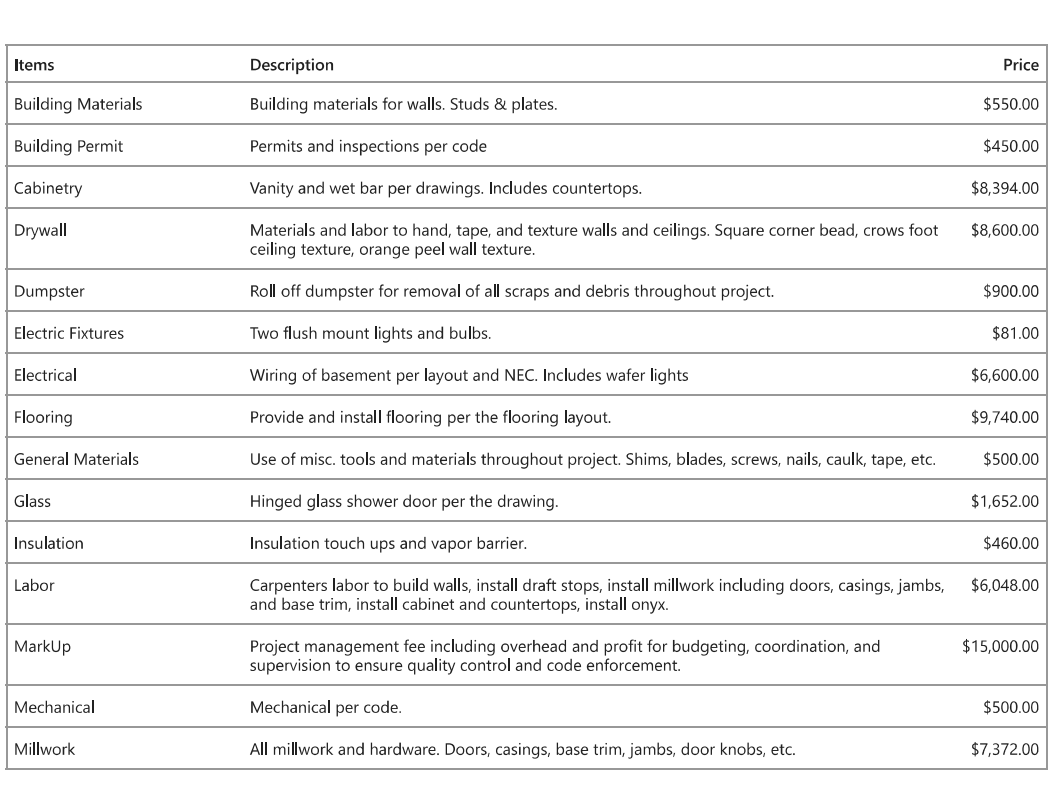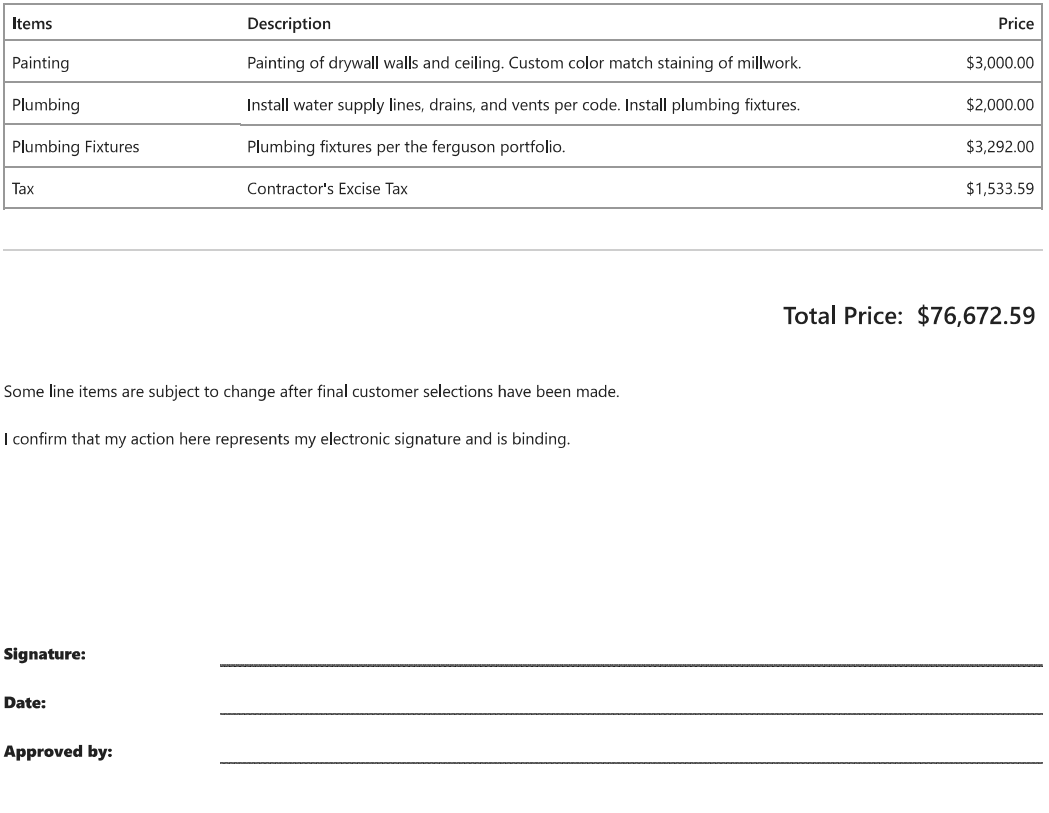GET TWO ESTIMATES
Determining the reliability of a “good” estimate from your contractor can be a challenging task. The sheer variety of contractors, each offering distinct services, coupled with the various approaches to achieve project goals, makes comparing estimates a tricky “apples to apples” endeavor. Nevertheless, certain aspects should always be discernible in a contractor’s estimate, regardless of the factors at play.
DIFFERENTIATE ESTIMATES, QUOTES, AND BIDS
Firstly, let’s clarify the distinctions between a quote, bid, and estimate:
QUOTES
When the term “quote” is mentioned, it should bring to mind the setting of a brick and mortar store. A quote typically arises from the vendors such as a lumber yard, where a sales agent combines multiple products with predetermined prices, along with taxes, onto one document. For most of our projects, we obtain quotes from the lumber yard for building materials, as well as from other specialized stores for light fixtures and plumbing fixtures.
BIDS
Bids, on the other hand, represent a different context altogether. While some sub-contractors might bid on residential projects, bids primarily pertain to the realm of commercial construction. Homeowners collaborating with residential general contractors should generally avoid accepting bids. A bid entails a fixed amount for a specific scope of work, which remains non-negotiable, regardless of circumstances. Such bids are usually presented as an all-encompassing work description with a single price figure attached to it.
ESTIMATES
Estimates, as the name implies, provide an approximation of the project’s cost. Contractors rely on their expertise, quotes, and data from previous projects to make an educated guess regarding the final cost. In residential construction, estimates are the most commonly employed method for cost projection. As the planning phase progresses and decisions are made, estimates undergo refinement. The two primary sources of changes in the estimate amount are unforeseen circumstances and change orders.
UNFORESEEN CIRCUMSTANCES AND CHANGE ORDERS
Unforeseen circumstances can substantially impact the project’s cost. For instance, while intending to remove a wall to expand a room, the discovery of a main sewer pipe may necessitate additional work, such as removing sheetrock or breaking open a concrete floor. The contractor’s ability to charge extra for such circumstances, including profit, would depend on the contract’s stipulations.
A change order, on the other hand, represents a formal acknowledgment of a client’s deliberate decision to modify certain aspects of the project. Any additional or removed elements from the original plan are duly documented in the change order form, outlining the corresponding cost adjustments.
EVALUATING ESTIMATES
Now that we comprehend the nature of estimates, the question arises: how can we determine whether an estimate is worthy of acceptance? Several factors come into play, some unrelated to the estimate itself. While the accuracy of the estimate is crucial, it is equally vital to ensure that the contractor is reputable and reliable. Before delving into the numbers, it is prudent to ensure that you trust the contractor to work unsupervised in your home. Here are three ways to evaluate an estimate.
ITEMIZATION AND ORGANIZATION
One of the most crucial aspects of a sound estimate is its itemization and organization. An ideal estimate should be line itemized in alphabetical order, providing a clear breakdown of every expense. The level of detail may vary depending on the complexity of the project. Some projects may necessitate only a few line items, while more intricate undertakings demand a comprehensive breakdown. Ultimately, the estimate should be explicit enough for you to grasp where the money is allocated. Obtaining multiple estimates can help in comparing the inclusion of various elements. For instance, one contractor may include a dumpster while another omits it, raising questions about the necessity and costs involved.
DELIVERY SPEED
Another factor worth considering is the time taken to provide the estimate. The contractor should establish a timeframe for delivering the estimate before leaving, allowing you to expect it within a reasonable period. Beware of estimates that arrive too swiftly, as it may indicate an overly hasty process relying on square foot pricing from past projects, potentially compromising accuracy. Although obtaining detailed quotes from vendors and sub-contractors may take longer, it results in a more precise estimate.
MARKUP
Lastly, every contractor seeks to profit from a project to sustain their business, and this is achieved through the markup. The markup is typically comprised of the contractor’s overhead costs and profit margin. The percentage will vary across companies. An honest and reputable contractor should transparently display their markup. Some contractors may charge more due to their experience or higher overhead costs, while others might offer lower prices as a result of fewer overhead costs or less experience. The markup should be clearly defined and easily explained.
CONCLUSION
In conclusion, evaluating estimates requires a comprehensive approach, encompassing factors beyond the estimate itself. Itemization, organization, delivery speed, and markup are critical elements to scrutinize. However, it is equally important to ensure you have faith in the contractor’s competence and integrity. Selecting the right contractor can be just as crucial. By obtaining multiple estimates and asking pertinent questions, you can make an informed decision. This will ensure your project proceeds with confidence and clarity.



